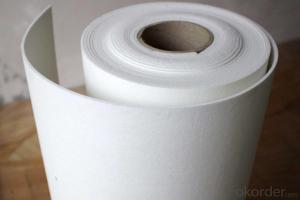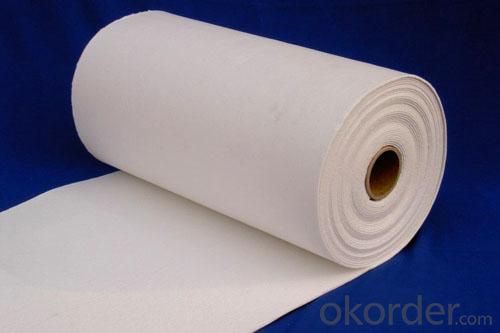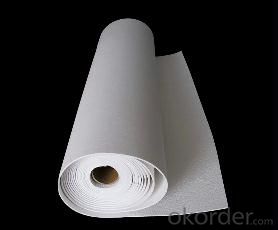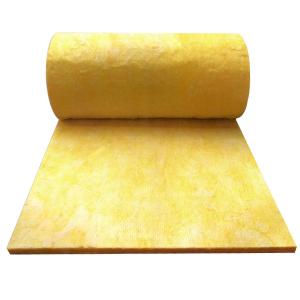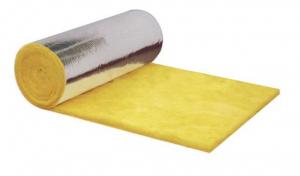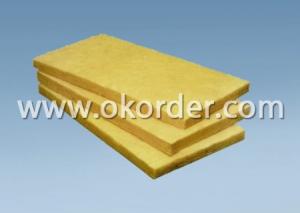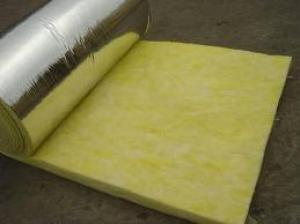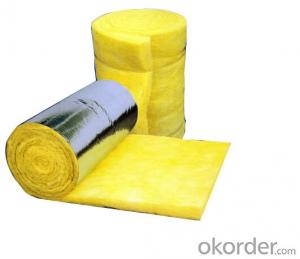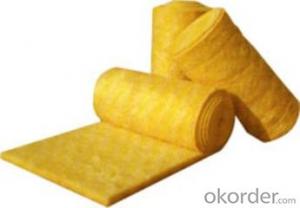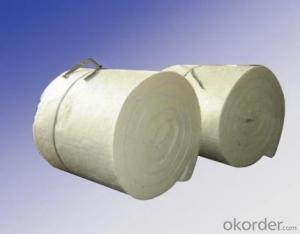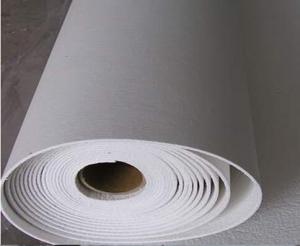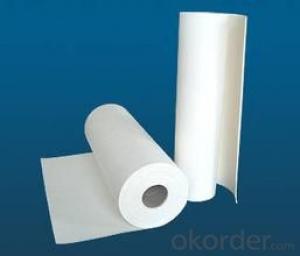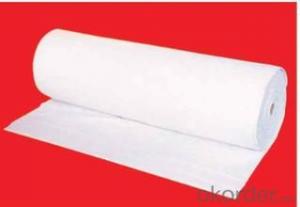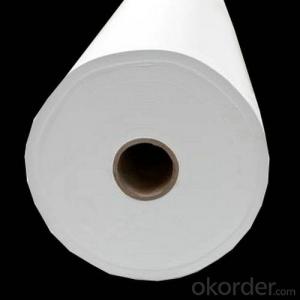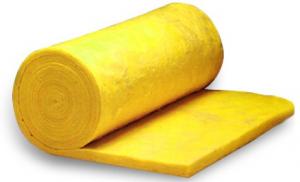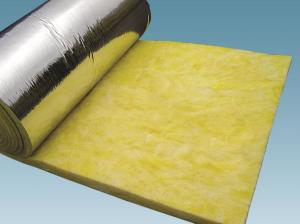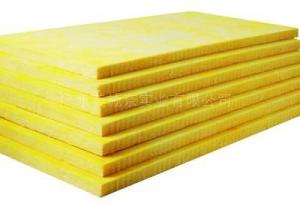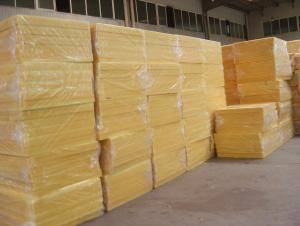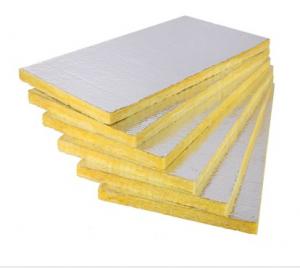Low Thermal Conductivity Alumina Ceramic Fiber Paper for Glass Turnace
- Loading Port:
- China main port
- Payment Terms:
- TT OR LC
- Min Order Qty:
- 40 roll
- Supply Capability:
- 5000 roll/month
OKorder Service Pledge
OKorder Financial Service
You Might Also Like
Packaging & Delivery
| Packaging Details: | Wrapped by plastic bag and put into carton box Neutral packing is also available. |
| Delivery Detail: | Within two weeks |
Specifications
Ceramic wool paper
Density: 200-250kg/m3
Thickness: 1~6mm
Temperature:1260C
Customized service is also available.
ceramic wool paper is a lightweight refractory material processed from a blend of high purity alumina-silica fibres into a highly flexible, uniform sheet. It is recommended for classfication temperatures up to 1260C. Ceramic fiber paper has low shirngkage, good handling strength, and low thermal conductivity. It contains a small amount of orgainc binder for processing which makes it flexible, and reduces off-gassing and odour during use. Our product has a highly uniform structure due to its controlled basis weight and thickness, assuring homogeneous thermal conductivity and a clean, smooth surface ideas for gasket or sealing. Ceramic fiber paper is completely free of asbestos, and is designed to be an economic replacement for asbestos paper in most applications. Ceramic fibre paper is easy to cut with a knife, shears, or standard steel rule dies. Its flexibility allows it to be wrapped or rolled to fit most complex configurations.
Application
Abestos paper replacement
Investment cast mold wrap insulation.
One-time consumable insulating applications
Back-up lining for metal troughs.
Hot top linining
Applications where low binder content is required.
Thermal and electrical insulation
Upgrade for fiber glass paper and blanlet products
Technical Data Sheet
Description | STD PAPER | HP PAPER |
Chemical Composition (%) | ||
Al2O3 | 47 | 48 |
SiO2 | 52 | 51 |
Fe2O3 | ≤0.5 | ≤0.5 |
Na2O | ≤0.2 | ≤0.2 |
Physical Properties | ||
Density(kg/m3) | 200 | 250 |
Classification Temperature ( °C ) | 1260 | 1260 |
Maximum Operating Temperature( °C ) | 1000 | 1100 |
Organics Content (%) | ||
Color | white | |
Loss of Ignition ( % ) | ≤10 | |
Tensile Strength(Mpa) | ≥0.3 | |
Technical Data Sheet
Moisture content (%) ≤ 1
Organic content : ≤10%
Tensile strength (Mpa) ≥ 0.3
Standard Specification
Width: 610/1220mm
Thickness: 1/2/3/4/5/6mm
Density: 200-250kg/m3
Customized service is also available. For more information,please contact us !
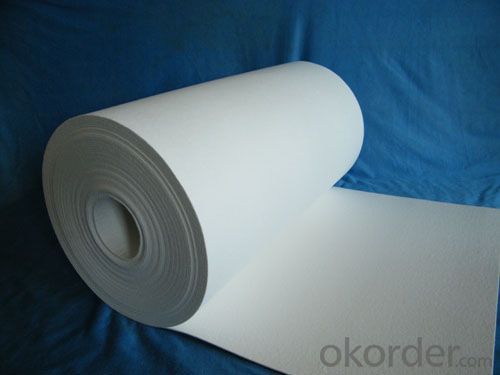

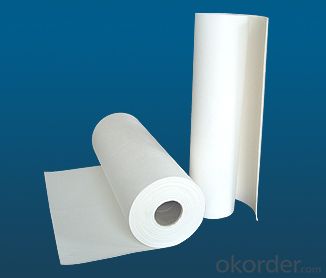
- Q: What are the differences between glass asbestos and glass?reinforced?plastics?
- Asbestos also known as "mountain cloth" is a commercial term that refers to silicate mineral products with high tensile strength, high flexibility, heat resistance, and chemical corrosion, electrical insulation as well as spinnability. It is the general term of natural fibrous silicate minerals. It includes two categories, a total of six kinds of minerals(serpentine asbestos, hornblende asbestos, actinolite asbestos, antholite asbestos, amosite asbestos, tremolite asbestos, etc.) Asbestos are made of fiber bundles, while fiber bundles are composed of long and narrow fibers which can be separated from each other. Asbestos, with properties of highly fire resistance, electrical insulation and thermal insulation, are important fireproofing, electrical insulation and thermal insulation materials. Glass?reinforced?plastics(FRP) also known as GRP, are fiber-reinforced plastics which generally refers to the matrix of glass fiber reinforced unsaturated polyester, epoxy resin and phenolic resin. Reinforced plastics, with glass fiber or its products as reinforced materials, refer to glass fibre reinforced plastics or glass?reinforced?plastics. Due to the different varieties of resin, there are polyester glass?reinforced?plastics, epoxy glass?reinforced?plastics, and phenolic aldehyde glass?reinforced?plastics. They are light and rigid, non-conducting, and corrosion-resistant. They have high mechanical strength, low recycling rate. Machine parts, cars and Ship hulls made of steel can be replaced by them.
- Q: To reach better sound absorption effect, which should be filled in the keel, glass wool felt / board or polyester fiber cotton felt / board ?
- Glass wool board Glass wool board is mainly used for sound insulation. Glass wool felt is mainly used for thermal insulation, and polyester fiber cotton felt is mainly for thermal insulation and sound absorption.
- Q: During the construction of steel structure, should the aluminum foil of glass wool be directed indoors or outdoors? Why?
- When the steel structure is constructed, aluminum foil of glass wool should point toward the indoor.
- Q: Choosing glass wool with proper thickness for piping insulation of Dn900 boiler room.
- It depends on the temperature of pipes. Steam pipes with 300 degrees should choose the thickness of 100mm, which is based on the national standard that pipeline’ skin should keep less than or equal to 50 degrees in temperature. While hot water pipes keep 40 to 50mm in this regard.
- Q: could experts tell me the producing method of insulating layer for glass?wool?board?
- If you have already taken the composite board as interior wall, you don't have to do the final construction, because the inside and outside layer of composite board have been very smooth and no defects, if you want to do surface construction, there will demand many materials, because there is no surface composite board, but only those with grooves on the market, and the groove itself is for increasing the weight and pressure bearing strength of composite board. Supplement: Glass wool composite board is metal surface fireproof?panel, it's mainly made of rock wool and glass wool, it takes high quality coating steel plate as the plane material, continuous cotton fiber, rock wool and glass wool as the core material, high-density hard foamed polyurethane as the tongue-and-groove filling, shaped after high pressure foaming solidified, automatic solid cotton cloth and controlled by the ultra-long precision double track.
- Q: Which has better effect of sound absorption, glass wool or rock wool?
- I will choose glass wool as it is easy to install due to its low density.
- Q: What are the differences between glass wool and rock wool in terms of thermal insulation?
- If the temperature is higher than 300 degrees, the rock wool boards are better. The operation life of glass wool at high temperature is short, and the price of which is higher than that of rock wool. Galvanized board can be used as protective layer for its long operation life but it rusts easily and is not so beautiful. The aluminium plate has a short operation life and it damages and deforms easily.
- Q: The main application of glass wool
- As long as it is pipes that needs to be insulated.
- Q: What is the highest temperature that the fireproof glass?cotton can resist?
- It is certain that A level is the highest. A level indicates that it is non-combustible. Level B indicates that it is fire?retardant. Rock wool can resist 800 ℃ and glass wool can resist 450 ℃. The hest perservation effect of matetials of B level is relatively better.
- Q: The differences between rock wool board and glass?wool?board
- has good sound absorption properties, whose chemical composition belong to glass, has a large number of tiny pores, oil, good acoustic performance, boiler, make man-made inorganic fiber with high-speed centrifugation equipment, national defense. rock wool board has a high temperature endurance of 650 degrees, transportation and other industries, fan. Fibers inside the centrifugal glass wool are fluffy and staggered into cotton-like material, which is the ideal thermal insulation and sound insulation material with stable chemical properties. Glass wool is made by fibrillating the melten glass and then heating and curing into a variety of specifications, metallurgy, flue, textiles, automotives and boats and other industrial equipment, with features of insulation resistance and corrosion resistance, which is an inorganic fiber, with good shape and low thermal conductivity. Glass wool is one of the glass fiber categories with small bulk density, rock wool insulation products and heat exchangers of different requirements, is a kind of man-made inorganic fiber, is pipeline basin. Rockwool products are widely used, while adding special binder and dust laying oil, electricity, suitable for construction. glass wool has a high temperature endurance of 450 degrees, the main raw material of rock wool is natural basalt, which is typical porous sound-absorbing material after being melted in high temperature.
Send your message to us
Low Thermal Conductivity Alumina Ceramic Fiber Paper for Glass Turnace
- Loading Port:
- China main port
- Payment Terms:
- TT OR LC
- Min Order Qty:
- 40 roll
- Supply Capability:
- 5000 roll/month
OKorder Service Pledge
OKorder Financial Service
Similar products
Hot products
Hot Searches
Related keywords
